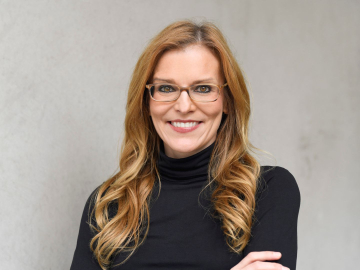Individualized learning in executive education

Over 40% of employees’ time is reportedly spent on tasks that do not tangibly help them achieve their professional responsibilities.Their workflow is frequently disrupted—often, ironically, by a notification on one of their multiple collaboration tools. As a result, 1% of the working week is all they feel they can devote to professional development.[i] Meanwhile, digital disruption and increased automation has created an unprecedented skills gap in the global jobs market.[ii]In these changing times, engaging in career-long learning has never been more vital.
Consequently, ambitious young managers are increasingly taking their professional development into their own hands, eschewing the rigid syllabus of traditional executive education in favor of micro-learning platforms such as LinkedIn Learning. These online platforms offer flexible, mobile learning—with the individual in the driving seat.
Indeed, the heyday of off-the-shelf, syllabus-led executive education is over. The return on investment (ROI) of these often expensive leadership development programs has been called into question. Companies rightly demand ways of measuring change, in performance or behaviors, in the years following their purchased program. Executive education providers must search for those answers.
The problem is not a lack of expertise at top business schools, but the way some of their business has been conducted. Clients, after communicating their transformational agenda, often let teaching faculty decide the content and design of training programs—while the executive participant remains more or less anonymous until that very first coffee and icebreaker session. Highly motivated participants may proactively try to relate the learning objectives to their own (very personal) career roadblocks and team dynamics. Others may switch off when they perceive topics to be unrelated to their own needs. Either way, the content is often in danger of being processed on an intellectual level only—however engaging the topic or the trainer.
Clearly, as executive educators, we need to maximize the impact of our offerings. We cannot afford to brush off accusations of irrelevant content and academic bombast. Instead, we must set the bar for a new standard of leadership development, upending the top-down nature of certain business models and shifting the focus onto individual participants.
A typical example from the ESMT archive
A few weeks before the course began, the client’s Learning and Development Lead sends the full names, job titles, and email addresses of the program participants—and little more. Useful information for printing name badges and certificates, perhaps, but no insights into the people behind the job titles.
Last year Mandy Hübener and Bianca Schmitz, both program directors at ESMT Berlin, talked with Allianz—one of the school’s most regular clients—about an accelerated leadership program for the insurance giant’s top HR talents. The ESMT team shifted the focus of the program design process, so that participants’ differences were placed front and center. “On a traditional participant list, the nominees would have looked rather similar”, explains Hübener. “These men and women held similar positions across the company’s various business units, with similar years’ of service.” However, it soon became clear that the cohort was extremely heterogeneous. “In a traditional client partnership, we would only be told that these individuals had all demonstrated potential to take over senior executive positions in HR”, adds Schmitz. “Before we met them on campus, we would have had little insight into what that means in practice for each individual.”
The ESMT program team advocated for a complete co-creation between Allianz’s Learning & Development Lead, the participants and the ESMT teaching faculty. As financial sponsor, the L&D lead would continue to represent the client’s interests, and define the end goal of the program—in this case, defining the core competencies that their HR talents needed to demonstrate before stepping up to senior leadership roles. A pre-program baseline assessment was conducted for every participant, ensuring their own interests were represented before the design process kicked off: How confident did they feel in each core area? What specific challenges were they facing? What qualities would their ideal mentor possess? These self-reports were aggregated with more objective measures of performance, such as the 360 feedback survey from their colleagues, direct reports, and line managers. The ESMT team was then able to map a personalized learning journey for each individual, designed to run alongside the expert-led teaching on mandatory topics.
The data that the two program directors gathered at this stage proved invaluable. It became clear that the participants had followed diverse career paths and had demonstrated different strengths since progressing through the company. Crucially, the data also revealed significant variance in the competency areas they felt less confident about performing in their future role—and in the personal learning objectives for the program they were each about to embark upon. In addition, Allianz and ESMT scheduled four individual guided development conversations for each participant at key moments in the learning journey (a unique feature of this program). These candid conversations helped keep participants accountable to their own specific goals and facilitated a continuous open dialogue between the business school, the client, and the executive student.
One size fits . . . nobody?
Lateral career moves are increasingly common, and job descriptions increasingly fluid. Many mid-career professionals in agile organizations are being trusted to take on more responsibilities, without receiving a formal promotion. Businesses operating in a ‘VUCA’ environment are demanding a high autonomy, initiative, and ownership from their executives. In these so-called ‘adhocracies’ leaders are less able to rely on formal authority and must learn to flex their style depending on the context. Without proper training and support, many will struggle to keep up with the pace of change.
The needs of the modern knowledge worker are therefore very specific, increasingly divergent, and, above all, changing rapidly. Education providers have two key challenges: first, to get better at recognizing and meeting individuals’ needs, in terms of content and learning format; secondly, to ensure that what is taught is transferred from the classroom to the office.
Directing more resources towards individualized learning will help the executive education industry meet both challenges. Learnings are more likely to be transferred if the content of a customized learning journey is personalized. Encouraging program participants to apply what they have learned between formal teaching will help bridge the ‘skills transfer gap’. There is ample evidence that interleaved practice and elaboration is one of the most powerful techniques for making learning stick.
Champions of co-creation
Hübener and Schmitz have now co-created several programs with a range of clients. Each has followed a similar ratio of expert-led classroom teaching to fully personalized, data-driven learning journeys, with plenty of high-touch elements:
- Regular 1-on-1 coaching or mentoring sessions for self-reflection—to keep abreast of progress and evolving needs, and as an accountability mechanism
- Curated learning content and activities—in the form of specific readings, job shadowing opportunities, mentorship programs, mini-challenges, and project assignments
- Unlimited access to a pool of self-paced online modules specific for each individual, with guidance via pre-defined learning paths or topic clusters
The collaborative effort between sponsor, education provider, and participant functioned like a continuous conversation. The individual learning journeys drawn up at the beginning of the partnership were treated as ‘first drafts’—allowing for changes to be made based on individuals’ changing needs.
Having worked more closely than ever before with individual participants, Hübener and Schmitz are firm believers that the ROI for their clients is irrefutable. The experiment has proven successful several times, so the program directors now feel confident that this level of customization is a scalable business model for ESMT. Recent developments in online learning have meant many aspects of the learning journey can now be achieved in pre-recorded videos or virtual seminars, which drastically reduces overhead costs for the business school. The ESMT team were inspired early on by low-cost, data-driven customization techniques used in targeted marketing, and soon realized this allowed more spend-per-head on high-cost, high-impact content such as one-to-one coaching. What was prohibitively expensive a few years ago has now become possible in a blended format.
Conclusion
To guarantee maximum ROI for its clients, executive education needs to fulfill some key criteria. The content must be tailored to individuals’ profoundly personal career paths, knowledge gaps, and blind spots, and the format must also suit the learning style and working context of each participant (podcasts, TED talks, print—no learning method is invalid). Self-paced online modules are a good step in this direction, allowing a decoupling from the rigid corporate calendar or the availability of teaching faculty. But individualization must also mean creating regular opportunities to reflect on and assimilate new skills and knowledge. Furthermore, executive participants should feel they have the toolkit and the support network they need to continue their learning journey long after they leave campus.
Endnotes
(i) See statistics from Bersin by Deloitte
(ii) See report from the World Economic Form: http://www3.weforum.org/docs/WEF_Future_of_Jobs.pdf
This article was originally published by The European Business Review on March 14, 2021, and republished with permission.


